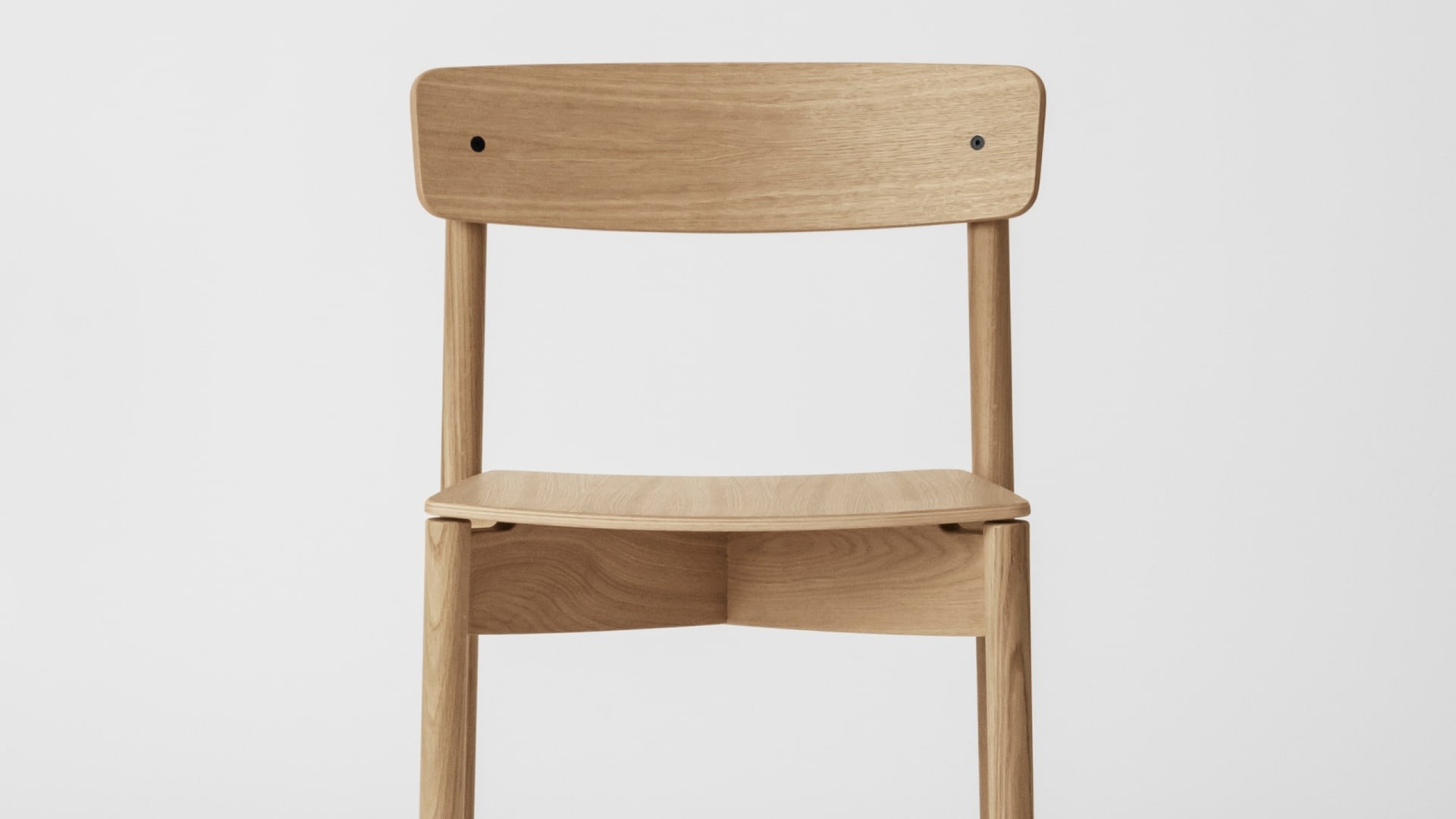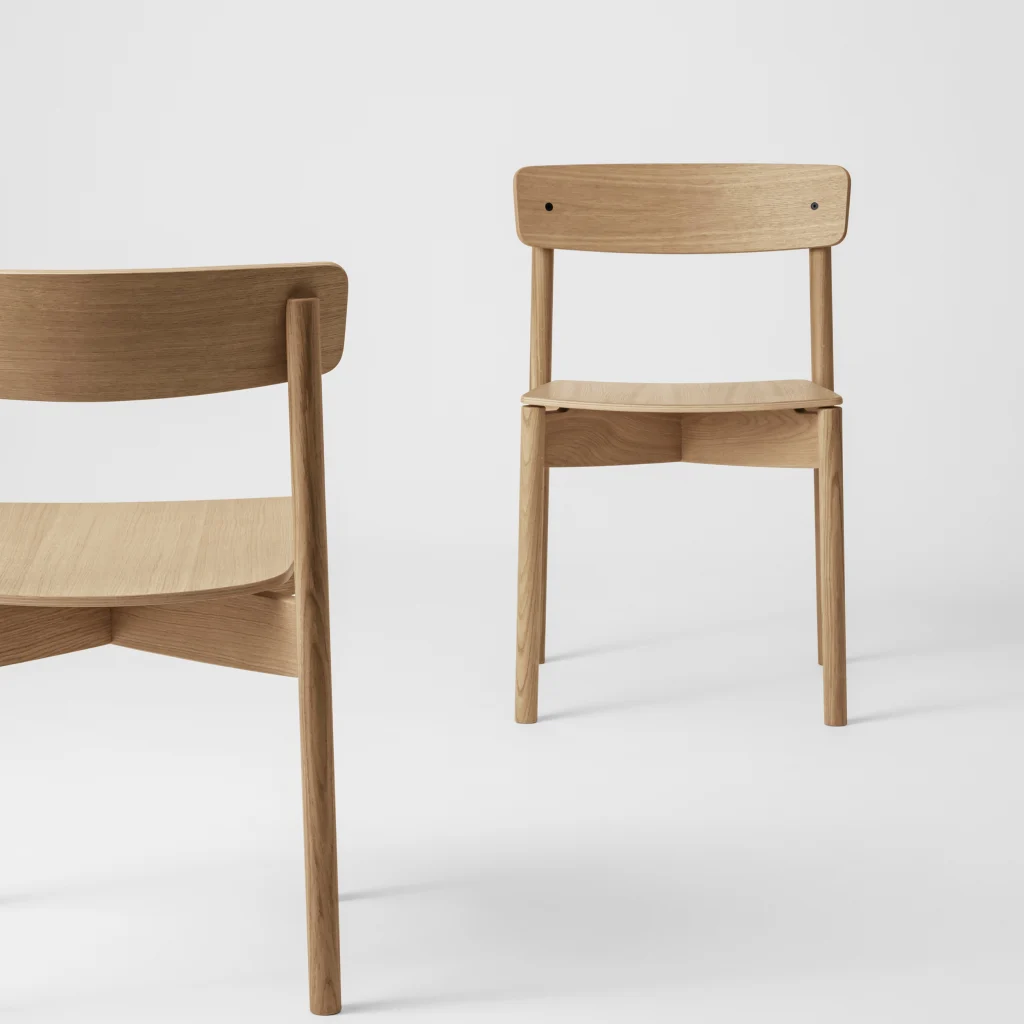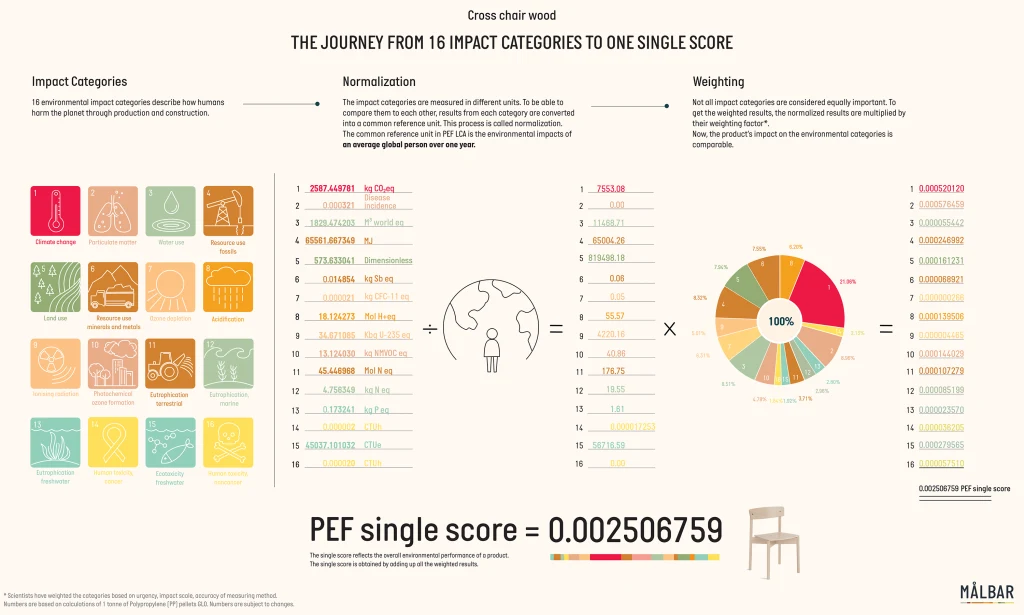- | 8:00 am
Meet the world’s most environmentally conscious chair
Takt tracked the environmental footprint of its Cross Chair, from inception to delivery.

The Cross Chair from Danish furniture brand Takt may be the most environmentally conscious chair in the world. In an industry first, the wooden chair has undergone an exhaustive life-cycle analysis to determine its environmental impact. Measuring common aspects like the carbon footprint of its materials and transportation as well as things like its land use, ozone depletion, and freshwater ecotoxicity, the analysis is a borderline-obsessive look at what impact a chair has on the world, and could lead to more sustainable furniture in the future.
This analysis was conducted using a method called the Product Environmental Footprint (PEF) reporting tool, developed using European Commission methods by Målbar, a company specializing in life-cycle analyses. The PEF measures the environmental impact of a product through the lens of 16 factors, each of which is weighted for its overall significance. Those measurements are then combined into a single score, which is compared against a baseline of 1, for the average environmental impact of one global citizen. Takt’s Cross Chair score is 0.002506759.

Right now, that number may not mean much. But Takt CEO and founder Henrik Taudorf Lorensen says that as more products undergo this life-cycle analysis, this figure will become a new way for brands and individual products to distinguish themselves. “I’m hoping for the situation where people will start to compare not just on monetary price but also the environmental price you pay,” he says. “That will be a competitive factor.”
THE FUTURE OF SUSTAINABLE FURNITURE
Takt has made environmental transparency a key part of its brand. The company was founded five years ago with the intent of reducing the climate impact of furniture. It’s estimated that about 12 million tons of furniture waste is thrown out every year in the U.S., and Lorensen says that the furniture industry has shunted a sense of environmental responsibility in pursuit of lower-priced goods. Putting a score on the life-cycle impacts of a piece of furniture, he suggests, could be a way to help consumers shift to more responsible manufacturers.
The PEF took about two years to develop, and involved tracking down information on materials, suppliers, and even obscure parts of Takt’s own production facilities. The company has tracked the carbon footprint of its products from the start, and knew that this was the biggest environmental impact of the Cross Chair, a simple dining table-style seat that sells for about $440. Most of the carbon footprint—and therefore the overall PEF—stems from the materials and their transportation. Lorensen had no idea what would rank second highest.

Once all the reporting was complete, he learned that a fairly large part of the chair’s environmental impact was in local particulate matter, specifically from the burning of wood offcuts for heating in Takt’s factory. There wasn’t a particle filter on the chimney, which was revealed in this process, Lorensen says. He’s currently in talks with the facility’s managers to get that filter put in place.
Once it is in place, the Cross Chair’s PEF will likely go down. Lorensen says he’s hoping this life-cycle analysis happens repeatedly across Takt’s furniture lines, and with each pass the company can tweak its processes and supply chain to drive down the environmental impact further. “Rather than thinking we’ve achieved final sustainability, it’s just an ongoing process of how to keep on getting better,” he says.
Whether other companies run similar analyses remains to be seen, but Lorensen says this approach should not be seen as the airing of a company’s dirty laundry. As more companies engage in monitoring and touting their corporate social responsibility, a score like the PEF can plug into that reporting.
This kind of life-cycle analysis could also become a selling point, sort of like an organic label on a grocery item or an energy-efficient label on an appliance. But Lorensen says that kind of mass interest in sustainable furniture is a distant potential, and not really the point. “We’re not driven by the market demand for this,” he says. “We’re driven by doing what is right.”





































